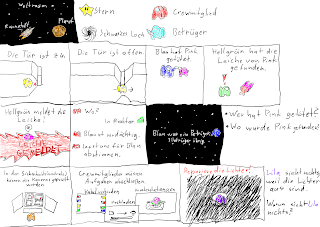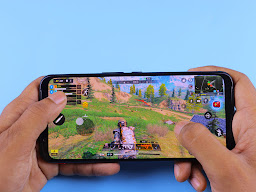Last year I shared some creators that helped me learn about game development. This year I'm gonna pass on some life advice kind of. If you play certain types of games, listen to music, are a bookworm, movie aficionado, or a weeb listen up. This goes out to you.
We Pass On Information By Telling Stories
The anime and manga "Dr. Stone" is an interesting example. In some chapters and one of the episodes, they mention the "100 Stories" that are passed on from generation to generation keeping important information.[1] Even better this is not made up. It actually matches up with real-life as well. Not only did Carl Jung research archetypes consciously or unconsciously hidden in stories, but we also tell our children stories that coincidentally have a moral. You might just do it as a bedtime story because you got one or two read for you or because you liked them but there's more reason for it. Whether it's teaching children not to take apples from strangers[2] or not to steal from others[3]. Another great example is the book "There's No Such Thing As A Dragon", which is also used by Jordan Peterson to illustrate this point. In this children's book, a dragon representing an issue is ignored within the household. Through the action of ignoring it, it grows bigger and bigger causing trouble all around until the family stops ignoring it and deals with it. This tells us not to ignore problems and solve them, else they might get worse and blow out of proportion.[4] Those are all children's stories though.
This Is Not Limited To Children Stories
But, this is not limited to those. The bible is another example. It contains a lot of stories, instead of facts and you can learn from all of them. Whether it's questioning morals and decisions or showing what is righteous and what isn't. I would even go further to say this is also the case for animes. Seeing how a person has to struggles against being oppressed and abused in all kinds of ways[5], or people dealing with their own psychological issues.[6] Asking the question of what justice is and how it can be twisted.[7] Showing that you shouldn't rely on your talents too much and that regardless of how weird your quirks are you are like everyone else a human.[8] Things like you should think for yourself.[9] And even the topic of racism.[10] These are all examples of life lessons you can take from these artworks and there are probably many more.
So Keep On Consuming... However
[1] https://dr-stone.fandom.com/wiki/100_Stories and Dr. Stone episode 17
[2] "Snowwhite"
[3] "Goldilocks and the Three Bears"
[4] https://www.youtube.com/watch?v=J54FMA895OA
[5] "Rising of the Shield Hero"
[6] "Persona 4: The Animation"
[7] "Death Note"
[8] "Mob Psycho 100"
[9] "Psychopass"
[10] "GeGeGe no Kitarou"























